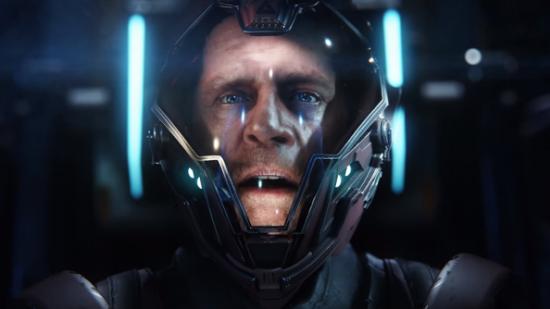Former Star Citizen developers have been speaking out against Chris Roberts, founder of Cloud Imperium Games, pointing at unrealistic expectations and an ever-increasing scope leading to longer development times.
Explore the infinite vastness in our list of the best space games.
In a lengthy and detailed Kotaku report, they reached out to various people who have worked on the ambitious space sim and many were saying the same thing: Chris Roberts was constantly requesting complex new features.
On one occasion, Roberts went to work after playing PlayStation 4 exclusive The Order: 1886. After playing the six-hour single-player shooter, Roberts asked CIG’s character artists to match that standard with the character models. Some staff saw this as impossible.
“That’s fine for a single-player game where you’re able to control stuff and stream things in a certain way,” one of Kotaku’s sources explained. “You do not expect that for any kind of MMO or open world. But that’s common knowledge for anyone that’s worked in games.”
Another time, Roberts saw Kingdom Come: Deliverance, an in-development CryEngine RPG. The game uses a layered inventory system that grants materials different properties based on weight, shape and more. After seeing it in action, Roberts wanted this for Star Citizen too.
“All of the developers who had worked on inventory systems said ‘OK, well, that’s why this works in their game and why it won’t work in this game’,” a Kotaku source explained. “We spent four months having to prove ourselves right because that’s the way it works with Chris Roberts. The team lost four months on that, a lot of manpower and hours, proving that, yes, in fact that doesn’t work.”
According to another source, “There are no compromises with Roberts or reasoning with him once he has made up his mind about something.”
Roberts agrees that this all happened, but said that this attitude “irritates” him.
“That is someone who has their preconceived notions and will settle for something that isn’t good enough,” he explained. “With the character stuff: I said we need to do it. And the inventory… it happens right now in [version] 2.4. You can put jackets and trousers on, and caps. There’s layering with the armour. So everything that that person told you that couldn’t happen, it’s all in the game now and it’s all at the quality [I asked for]. We’ve got as good or better than what [The Order:] 1886 has.
“That is an example of people saying ‘No, I can’t do it’ and fighting that corner. They are the people I don’t get on with and they are the people who end up not being at the company. We’re trying to do something that has the fidelity that you see in The Order, or has the fidelity you see in a first-person shooter but has multiplayer online and this huge universe and I absolutely, to the very fibre of my being, know it can happen.”
Despite Roberts’ beliefs though, there are still some detractors who have worked on the game that doubt it will ever live up to its ambitions.
One person said it won’t be “what they’ve promised, absolutely not. If it happened then I would believe in God.”
“There’s a lot of Star Citizen that is incredibly impractical, while not a lot of it is impossible,” said another developer. “With enough time and money and clever people, anything can be made, right? I think it suffers from the same problem that has dogged all video game development since the beginning: overscope. There’s not a video game ever made that’s not had stuff cut from it, or dropped, or been redesigned because it turns out it was too big.
“Star Citizen started from this small development targeted at doing this one specific thing with a specific set of technology, which was absolutely fine – and then it grew and grew. Rather than adapting to new technologies and approaches for the new scope they stayed with what they had, which slowed everything down. In the end, what they should have done was decide a figure after the Kickstarter and gone ‘Right, we’re going to $25 million’, and if they had hit that, they should have gone ‘We’re done. This is the game and with $25 million we can make it in this time.'”
Roberts is slightly more optimistic.”Where we’re at now, I’m much happier,” he said. “I feel more in control of the beast. At the beginning it’s like you’re on the back of a bucking bronco and you’re trying to stay on while getting it wrangled in the direction you want it to. Now I feel good. I know there’s loads of work to be done but I feel like we have an organisation that can deliver it; maybe it won’t deliver it as fast as everyone wants but that’s just the nature of it.”
There are a lot more words on the development of Star Citizen over on Kotaku, and you should go and read it all because it’s very interesting.
